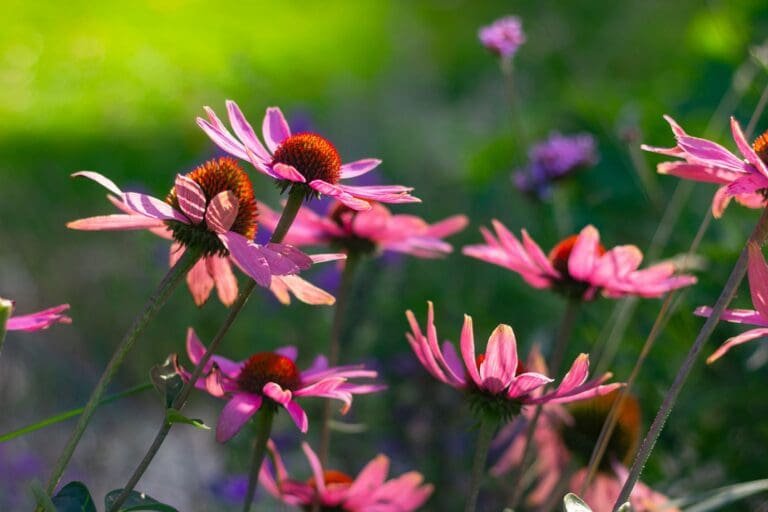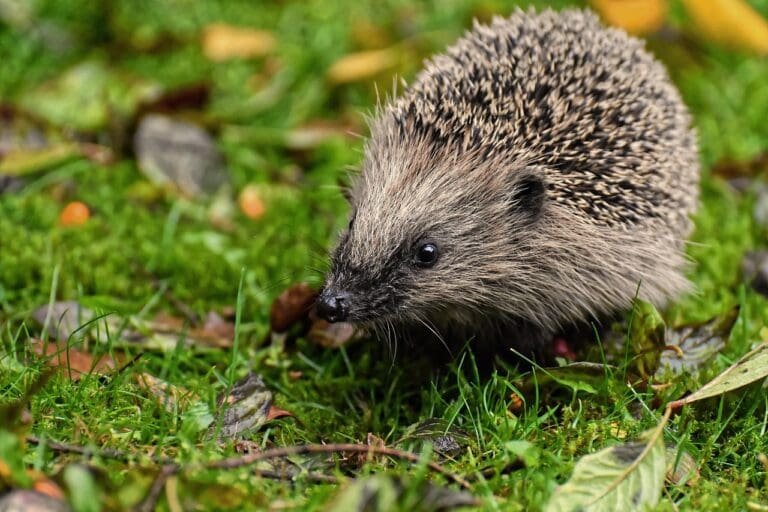Wondering how to attract dragonflies to your back garden? look no further. In this post we look at the best ways you can attract these beautiful creatures.
By inviting dragonflies into your garden, you’re boosting biodiversity and promoting a balanced ecosystem right on your doorstep. These incredible insects act as nature’s own pest controllers, significantly reducing troublesome insect populations.
This post contains affiliate links which means we may make commission from any qualifying sales with no extra cost to yourself.
Understanding Dragonflies
Dragonflies, with their unique life cycle that spans water and air, play a crucial role in our ecosystem. From their aquatic nymph stage to their airborne adult stage, they serve as both predators and prey, maintaining a healthy balance in garden ecosystems. In the UK, we’re fortunate to host about 30 species of dragonflies, each with unique colour patterns and habitat preferences.
How to Attract Dragonflies – Top tips
- Select a sunny location
- Add a water feature
- Plant native species
- Create a diverse plant structure
- Maintain water quality
- Avoid pesticides and chemicals
- Plan for all seasons
How to Attract Dragonflies – Getting Started
Select a Sunny Location
To welcome these captivating creatures to your garden, start by identifying a suitable area. A sunny spot near a water source, like a pond or stream, works best. They also appreciate a bit of greenery for perching and resting.
Add a Water Feature
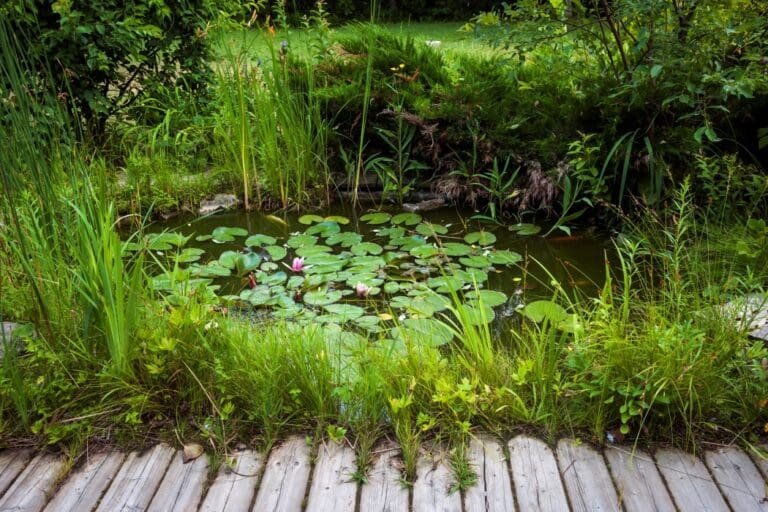
Dragonflies naturally gravitate towards water, given its essential role in their life cycle. If you’re keen on attracting more wildlife, especially these sparkling creatures, to your garden, the best and most effective step you can take is to add a pond.
But don’t worry if you can’t fit a big one – even a modest water feature or a tiny marshy spot can do the trick! Dragonflies are fans of clean, still water that’s not too deep – a depth of around 2 feet is ideal. Hence, a small, peaceful pond can work just as brilliantly to transform your garden into a popular stopover for dragonflies.
Plant Native Species
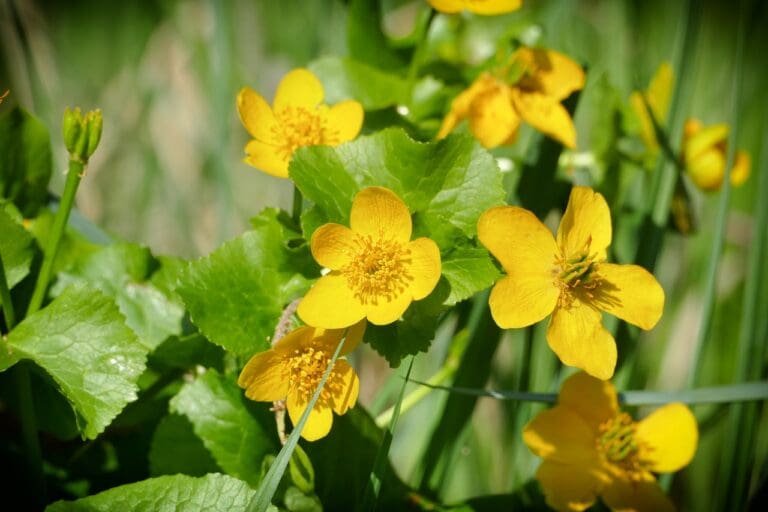
Incorporating native plants into your garden is another effective way to attract dragonflies. Plants like water mint, yellow iris, or the marsh marigold provide food and shelter. It’s important to maintain a diverse mix of plants, ensuring something is always in bloom.
Create a Diverse Plant Structure
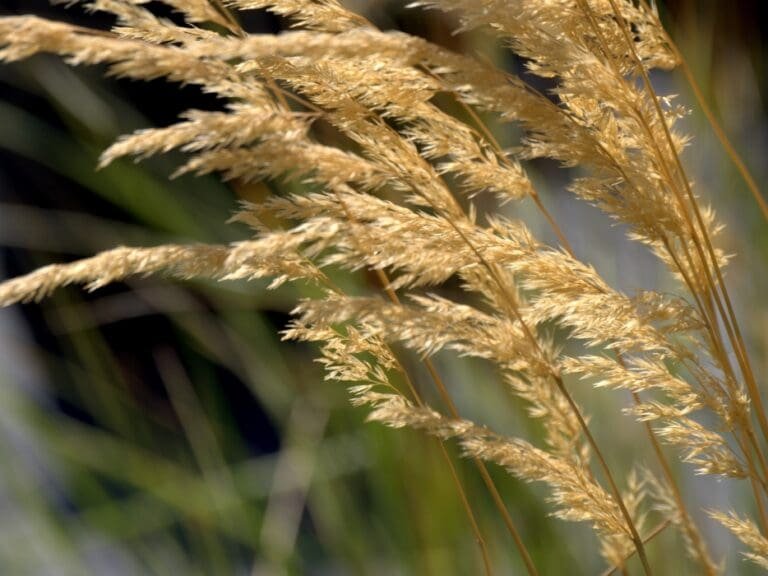
Dragonflies love to perch on tall plants, but also need low vegetation for protection. Consider creating a varied structure with tall grasses, shrubs, and trees. This will accommodate different dragonfly species and cater to their different life stages.
Maintain Water Quality
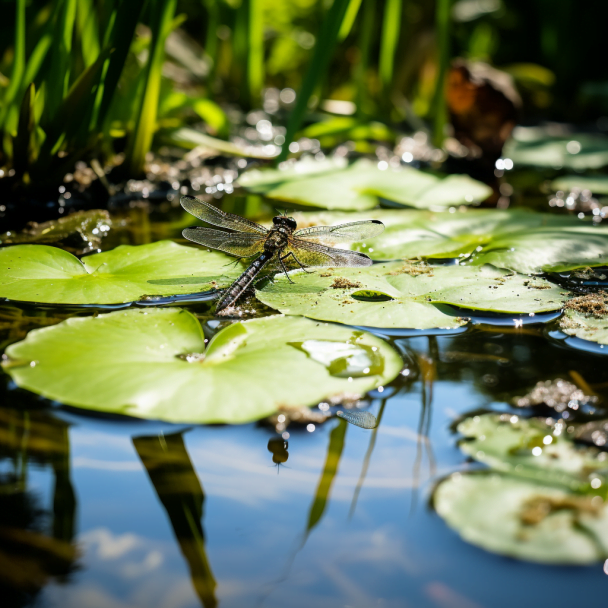
Once your dragonfly habitat is established, regular maintenance is key. Keep the water clean and well oxygenated. It’s also important to control algae growth, as an overgrowth can negatively impact dragonfly larvae.
Avoid Pesticides and Chemicals
Dragonflies are sensitive to chemicals. Avoid using pesticides in your garden, as these can harm dragonflies and their food sources. Instead, opt for organic gardening practices which are healthier for your garden’s entire ecosystem.
Once you’ve created a haven for these flying jewels, sit back and enjoy. Observe their incredible flying acrobatics and jewel-like colours.
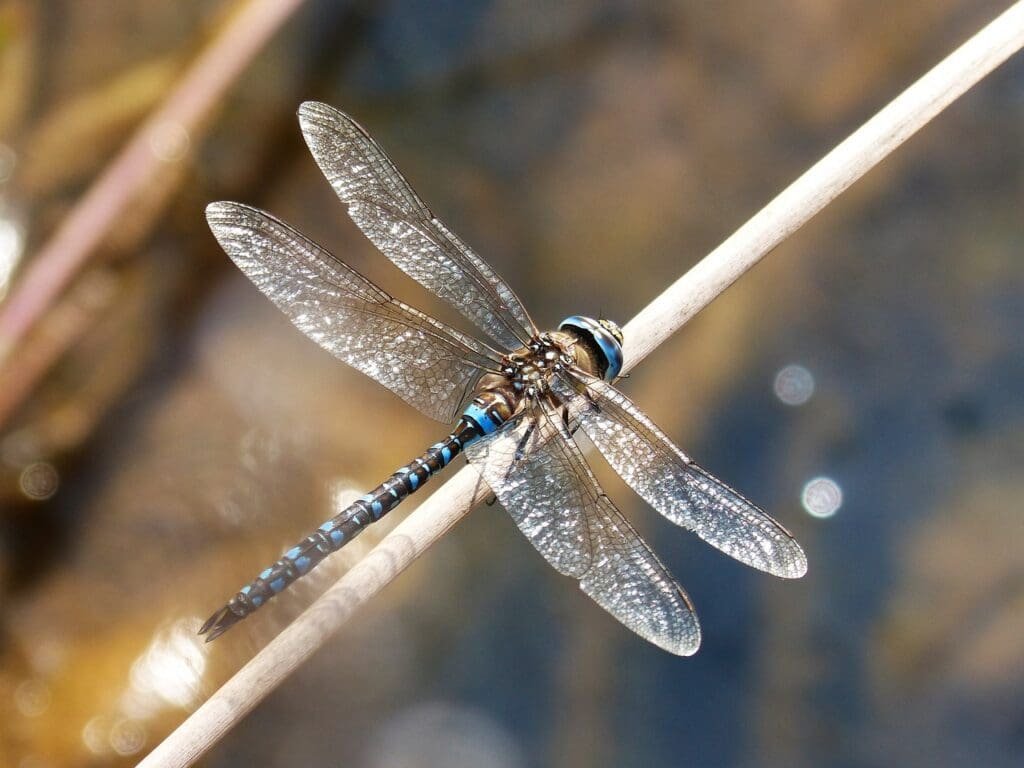
The Most Common UK Dragonflies
1. Common Hawker (Aeshna juncea)
This is a large dragonfly with a bright blue or yellow striped body and blue eyes. It’s typically seen from June to October, often flying around ponds or lakes and even woodland paths.
2. Southern Hawker (Aeshna cyanea)
This species is known for its curious nature and often approaches people. The Southern Hawker has a distinctive green and black body and can be found in a range of habitats, including ponds, ditches, and even gardens.
3.Migrant Hawker (Aeshna mixta)
As the name suggests, this dragonfly is known for its long migratory journeys. It’s smaller than most hawkers, with a brown body and blue spots. It’s commonly seen flying low around ponds and lakes, from July to November.
4. Emperor Dragonfly (Anax imperator)
One of the largest and most magnificent dragonflies in the UK, the Emperor Dragonfly is a spectacular sight with its bright blue and green body. It’s most active during the day and is often spotted from June to August, hunting over large ponds, lakes, and canals.
5. Broad-bodied Chaser (Libellula depressa)
This dragonfly is easy to spot due to its broad, flat body. Males have a powder-blue body, while females are brown with golden sides. They’re typically seen from May to August around ponds, ditches, and canals.
6. Four-spotted Chaser (Libellula quadrimaculata)
Named for the four spots on its wings, this dragonfly is brown with a yellowish side stripe. It’s frequently found near ponds, lakes, and wetlands from May to August.
7. Common Darter (Sympetrum striolatum)
This species is one of the most likely to visit garden ponds. It’s small with a reddish-brown body, and is known to perch on fences and vegetation. It can be seen from June to November.
Remember, different species might prefer slightly different habitats, so by diversifying your garden, you can attract a wide variety of these amazing creatures!
Advantages of attracting dragonflies to your garden
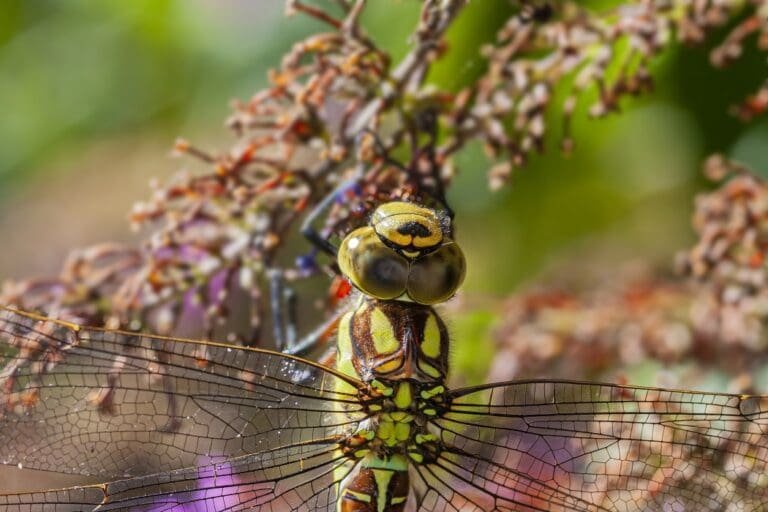
1. Natural Pest Control
Dragonflies are carnivorous insects with a voracious appetite, especially for mosquitoes and flies. They also eat aphids, which are known to harm garden plants. Hence, having dragonflies around can naturally reduce the number of pests in your garden.
2. Biodiversity Booster
By attracting dragonflies, you contribute to the biodiversity of your local ecosystem. Diverse ecosystems are healthier, more resilient to changes, and can better support a wide range of wildlife.
3. Indicator of a Healthy Environment
Dragonflies are sensitive to water pollution. Therefore, if you see dragonflies buzzing around your garden, it’s a good sign that your local environment is relatively clean and healthy.
4. Bird Attractant
Many bird species feed on dragonflies, so by attracting dragonflies, you may also attract more birdlife to your garden. This means even more opportunities to enjoy and observe nature.
5. Aesthetically Pleasing
Let’s face it, dragonflies are beautiful! Their radiant colours and graceful flight can make watching your garden a joyous and calming experience. They are the jewels of the insect world and can transform your garden into a magical place.
6. Educational Opportunity
If you have children, dragonflies can be a fantastic way to teach them about nature, ecosystems, and life cycles. Plus, their lifecycle from a nymph to an adult dragonfly is a great way to introduce concepts of metamorphosis.
Final thoughts
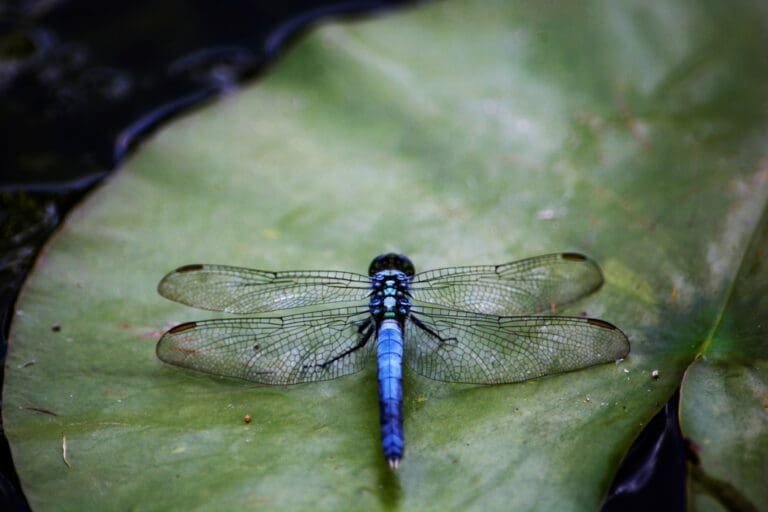
Attracting dragonflies to your garden is not only an enjoyable hobby but also an ecologically beneficial act. By creating an inviting habitat, you’re contributing positively to local ecosystems and biodiversity.
So, why wait? Turn your UK garden into a paradise for these magical creatures, and bask in the beauty and benefits of dragonflies. Happy gardening!
Frequently Asked Questions
Q: What time of day is best to see dragonflies?
Dragonflies are most active during the day, particularly when it’s warm and sunny. You’ll have the best chance of seeing them from late morning through to early evening, when they’re typically out hunting for food and looking for mates.
Q: Are dragonflies good to have around?
Absolutely! Dragonflies are beneficial for several reasons. Firstly, they eat a lot of insects, including pests like mosquitoes and flies. Secondly, they’re an important part of the food chain and ecosystem, serving as food for birds, fish, and other animals. Finally, their presence can indicate a healthy environment, as they thrive in areas with clean water and plenty of native vegetation.
Q: What plants attract dragonflies in the UK?
Dragonflies in the UK are attracted to a variety of native plants. Some favourites include water mint, yellow iris, and marsh marigold. They also appreciate tall grasses and shrubs for perching and low plants for shelter.
Q: What month are dragonflies most active?
Dragonflies in the UK are most active from late spring to early autumn. Different species can have slightly different active periods, but in general, you’re most likely to see dragonflies from May to October.
Q: Why do dragonflies stay in one spot for a long time?
Dragonflies often perch for extended periods to rest, scan for prey, and warm their bodies in the sun. Males may also perch to guard their territories against other males. So, if you see a dragonfly resting in your garden, it’s likely just taking a break or keeping an eye out for dinner!

